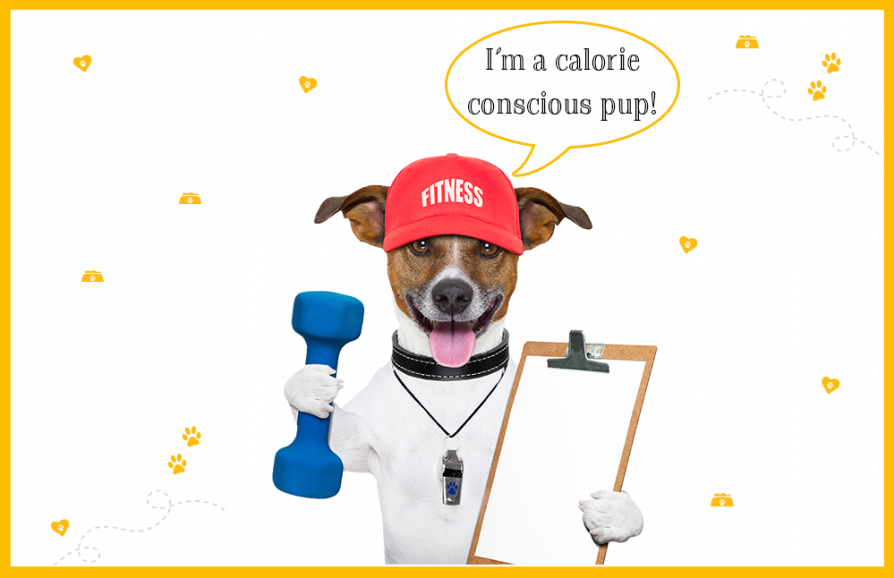Shedding the pounds: Choosing a weight-loss diet for your dog
- February 25th 2019

Planning a weight loss regime for your dog can be confusing—what foods would be best for your canine and how do you actually make sure they shed the pounds? In fact, admitting that your pet may be overweight is, in itself, difficult. Who wants to put their beloved on a strict diet, monitor what they eat and cut down their treats (especially with those big puppy eyes looking up at you)? It may feel easier to not notice the signs.
But obesity in dogs is a serious health
problem and should be addressed immediately. In this article, we talk you
through some of the steps associated with a healthy dog diet. Always rely on your vet for
a specific weight-loss regime; they know your pet’s history the best and can
tailor the diet to them. But here are a few tips and thoughts to get you
started.
How do you know your pet is overweight?
It can be difficult to tell when a dog is overweight. Dogs have a different muscle-to-fat ratio than humans, and extra fat can be difficult to notice with the naked eye. But here are three easy ways to tell your dog may be on the heavier side:
By scale – Most vets
have a special scale used to measure dogs. All dog breeds have an optimal dog weight, so make
sure you keep this in mind when weighing your dog. In basic terms, 15% over
that weight is considered obese and 15% under is considered underweight.
If you don’t have time to pop over to the vet, simply stand on a weighing scale
at home. Make a note of the weight. Then stand on the scale with your dog in
your arms and note that weight. The difference between the two is your dog’s
weight.
By touch – A quick and easy way to tell if your dog requires a dog food diet is by touch. Feel around the spine and rib cage. You should be able to feel the bone structure with only a thin layer of fat between the skin and bone. If there is more fat than that, it is likely your dog is overweight.
Physical symptoms – Often, your dog tells you when they are unfit. If your pet is panting with little exercise, if they seem inclined to nap all day instead of play or if moving is difficult for them, then these are good signs that your dog is above their optimal weight.
Controlling weight through diet
Controlling diet is, of course, the main
element in getting your dog to lose weight. Most pets who are obese have been
overfed for their type of breed. Several dog food companies have come up with calorie-light
dog food
that take into account
your dog’s dietary
requirements and can help your pet get back in shape.
But choosing which brands can be tricky. Several ‘low-fat’ dog food simply replaces fat with carbohydrates, as this instantly lowers the calorie count and is more filling for your dog. But carbohydrates are not great ingredients if your dog is trying to lose weight – it converts easily into fat and doesn’t help your canine in the long run. Here are some brands that do weight-loss food right:
Acana Light and Fit Dog Food – This is high-protein dog food that promotes lean muscle mass. It’s full of meat: free-run chicken, neat-laid eggs and wild-caught flounder – all the protein-rich ingredients you need for a healthier dog. It’s also low on carbohydrates and helps balance blood sugar levels by staying clear of high-hypoglycemic levels.
Royal Canin Veterinary Diet® Canine Satiety® Support Weight
Management
– This dog food should only be bought if recommended by your vet, so
make sure you have their approval. It is a highly specialized diet to promote
weight loss in overweight dogs. It is rich in fiber, which helps dogs feel more
satisfied during meals.
While not specifically weight-loss dog food, both Orijen and Acana produce what is known as ‘biologically appropriate’ food—i.e. food that is as close to the quantity, freshness and variety of meats that nature-evolved dogs to eat. They are good products to consider when keeping your dog on track for a healthy lifestyle.
What else you should consider
While a dog food diet is an important part of helping your dog to lose weight, it can only really be effective when used alongside several other measures to promote your dog’s health. Here are some practices that you should implement in your household when trying to get your dog back on track.
Scheduling mealtimes – Dogs often grow overweight because they eat throughout the day, often overeating. When controlling your dog’s diet, it is important to schedule mealtimes. Habit will help your dog understand when to expect the food and will help you monitor how much they are eating.
Portion control – When helping your dog lose weight, it is important to know what amount of calories they need in a day and feed them only that amount. Portion control is therefore very important. Make sure you use a cup to measure what you are putting in their bowl and the calorie totals add up.
Exercise – No weight-loss regime is complete without exercise. Different breeds require different amounts of exercise per day; you can check with your vet what would be ideal for your dog. Make sure your dog is getting the workout they need – it is the best way to help them shed the pounds.
Treating – More often than not, our dog grows overweight because they feed them too many treats or because they eat scraps from your table. This is an easy way to lose count of the calories your dog is consuming. Be stricter with the treats or invest in low-fat treats. And don’t feed your dog from the table, no matter how cute they look. Stay strong!
